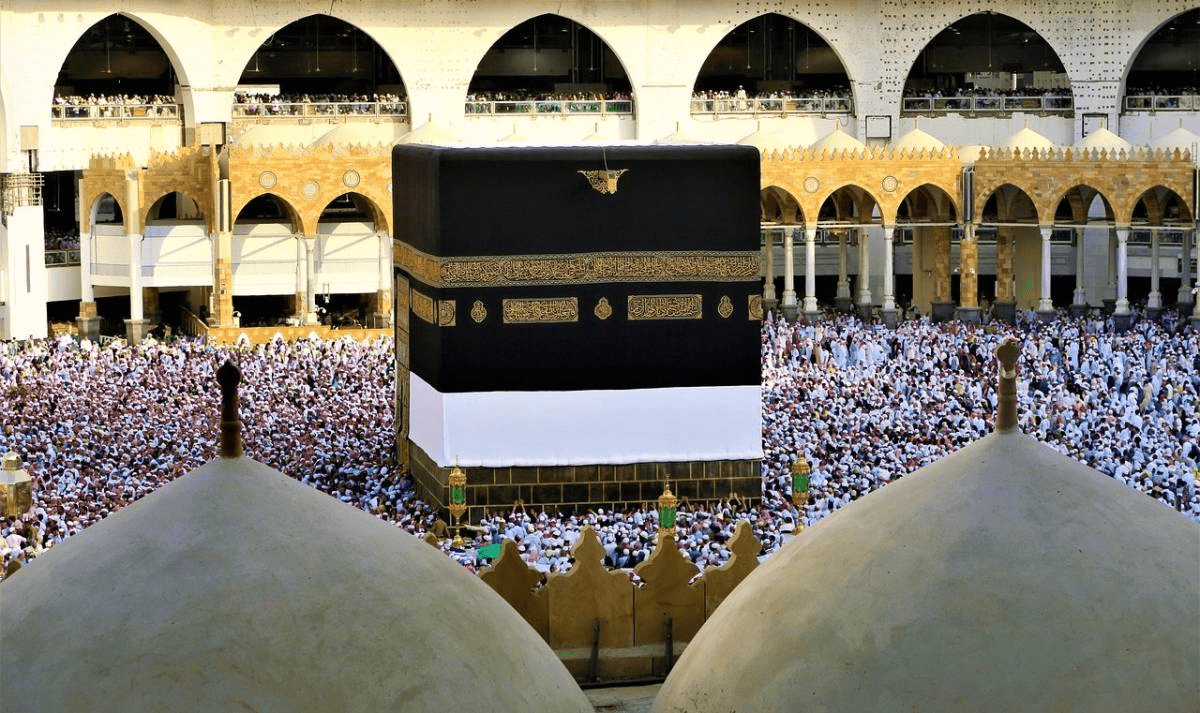Hajj, work, and a changing Saudi landscape…
Every year, millions of Muslims dream of standing in Mecca for Hajj. It’s a journey of faith, a spiritual anchor, and for many, a lifelong wish. In Saudi Arabia, that wish comes with navigating the modern reality of work schedules, deadlines, and labor policies. But now, for first-time pilgrims working in the private sector, there’s a new door open. Saudi Arabia has confirmed that eligible employees can receive 10 to 15 days of paid leave for Hajj, including the Eid Al Adha holiday.
This policy change is a nod to the balance between devotion and daily life. Between tradition and progress. And for thousands across the Kingdom, it’s a chance to fulfill a pillar of faith without sacrificing their livelihood.
What Does the Paid Hajj Leave Policy Say?
According to the Ministry of Human Resources and Social Development (MHRSD), private sector employees performing Hajj for the first time can now receive 10 to 15 days of paid leave. The leave must include the Eid Al Adha holiday and is granted only once during employment with a company.
To be eligible, employees must:
- Have completed at least two consecutive years with their current employer.
- Be performing Hajj for the first time.
This leave is fully paid and protected under Saudi labor law. It’s not deducted from annual leave. Employers must honor this entitlement, but can manage how many employees take it at once, depending on staffing needs.
Why This Matters for First-Time Pilgrims
Hajj is not just another trip. It demands preparation, physical stamina, emotional focus, and time. For many workers, especially expatriates or lower-income employees, the idea of taking two weeks off felt nearly impossible. This new provision changes that.
Now, for first-time pilgrims, the cost of missing work is no longer a barrier. You don’t have to weigh devotion against your job. With paid leaves for Hajj, spiritual commitment is recognized, not penalized.
How to Apply for Hajj Leave in Saudi Arabia
If you’re planning your first pilgrimage and work in the private sector, here’s what you need to know:

- Submit a formal request for paid Hajj leave to your HR department.
- Provide proof that this is your first Hajj. This can include passport stamps or registration via the official Nusuk platform.
- Confirm that you’ve completed at least two years with your employer.
- Apply well in advance. Employers have the right to plan and stagger leaves.
The leave period typically covers Eid Al Adha holidays as part of the 10 to 15 days off. Make sure your dates align with Hajj 2025, expected between June 4 and June 9.
Employer Rights and Responsibilities
Employers are legally required to grant Hajj leave if all conditions are met. However, they can:
- Limit how many employees go in a given year.
- Ask for official documentation.
- Schedule leave based on business needs.
That said, companies are encouraged to support employees in fulfilling this religious obligation. It improves morale, loyalty, and workplace culture. Respect for faith goes hand-in-hand with retention.
Does This Leave Apply to Expatriates?
Yes. As long as you meet the criteria, it doesn’t matter if you’re a Saudi national or an expatriate. Private employees in Saudi Arabia performing Hajj for the first time are eligible, regardless of nationality. This inclusivity is crucial. Many expats save for years for this journey, and now they can go without risking their income.
Are Eid Al Adha Holidays Counted Separately?
No. The 10 to 15 days off include Eid Al Adha. These holidays fall right in the middle of Hajj, so it makes sense to combine them. You won’t get separate leave for Eid on top of Hajj. Iit’s part of the full paid time off.
What If My Employer Denies My Hajj Leave?
If you meet the eligibility criteria and your employer refuses to approve the paid Hajj leave without a valid reason, you can file a complaint with the MHRSD. Saudi labor law protects this right. You’re entitled to perform Hajj once under this policy. Keep records of your application and correspondence.
Hajj 2025: What You Should Know
Hajj 2025 is expected from June 4 to June 9, depending on moon sighting. This year, Saudi Arabia is prioritizing first-time pilgrims. Rules for 2025 include:
- No children under 12 allowed.
- Online-only registration through the Nusuk portal.
- Validity of Hajj visas limited to 30 days.
Heat safety, vaccinations, and accommodation verification are part of the requirements. Plan early and get medical clearance.
How This Policy Reflects Vision 2030

This isn’t just about leave. It’s about creating a Saudi Arabia where faith and work are not at odds. Where labor rights include spiritual well-being. And where a private sector worker, whether in Jeddah or Jubail, can honor their beliefs and keep their job.
The Saudi labor law Hajj leave 2025 reflects the Kingdom’s commitment to a fair, modern work environment. It’s a step toward a more balanced, inclusive, and respectful society.
Because Hajj Deserves Its Place
This policy gives weight to something deeply personal. For those who have waited years to step into the holy sanctuary in Mecca, this leave is more than a benefit. It’s recognition. It’s respect.
With proper planning, clear communication, and mutual respect, Hajj leave can be a smooth process for both employees and employers. If this is your year, may your journey be accepted and your return, fulfilling.
FAQs
How many days of paid leave can private sector employees in Saudi Arabia take for Hajj?
Private sector employees performing Hajj for the first time are entitled to 10 to 15 days of paid leave, including Eid Al Adha holidays. This one-time leave is part of Saudi labor law and applies after completing two years with the same employer.
Is paid Hajj leave limited to first-time pilgrims?
Yes. The paid Hajj leave policy in Saudi Arabia applies only to first-time pilgrims. Employees must provide proof they have not performed Hajj before.
What are the eligibility conditions for paid Hajj leave in private sector jobs?
To qualify for paid Hajj leave, employees must have completed two consecutive years with their current employer and be going for Hajj for the first time. The leave includes Eid Al Adha and must be requested in advance with proper documentation.
Is the Eid Al Adha holiday included in the Hajj leave?
Yes. The 10 to 15 days of paid leave include the Eid Al Adha holiday. This ensures employees can complete the pilgrimage and celebrate Eid without needing extra time off.
How can employers manage paid Hajj leave in Saudi Arabia?
Employers must honor Hajj leave for eligible employees but have the right to manage how many employees take leave in a given year. Early planning, clear internal policies, and fair scheduling help ensure business continuity during the Hajj season.













